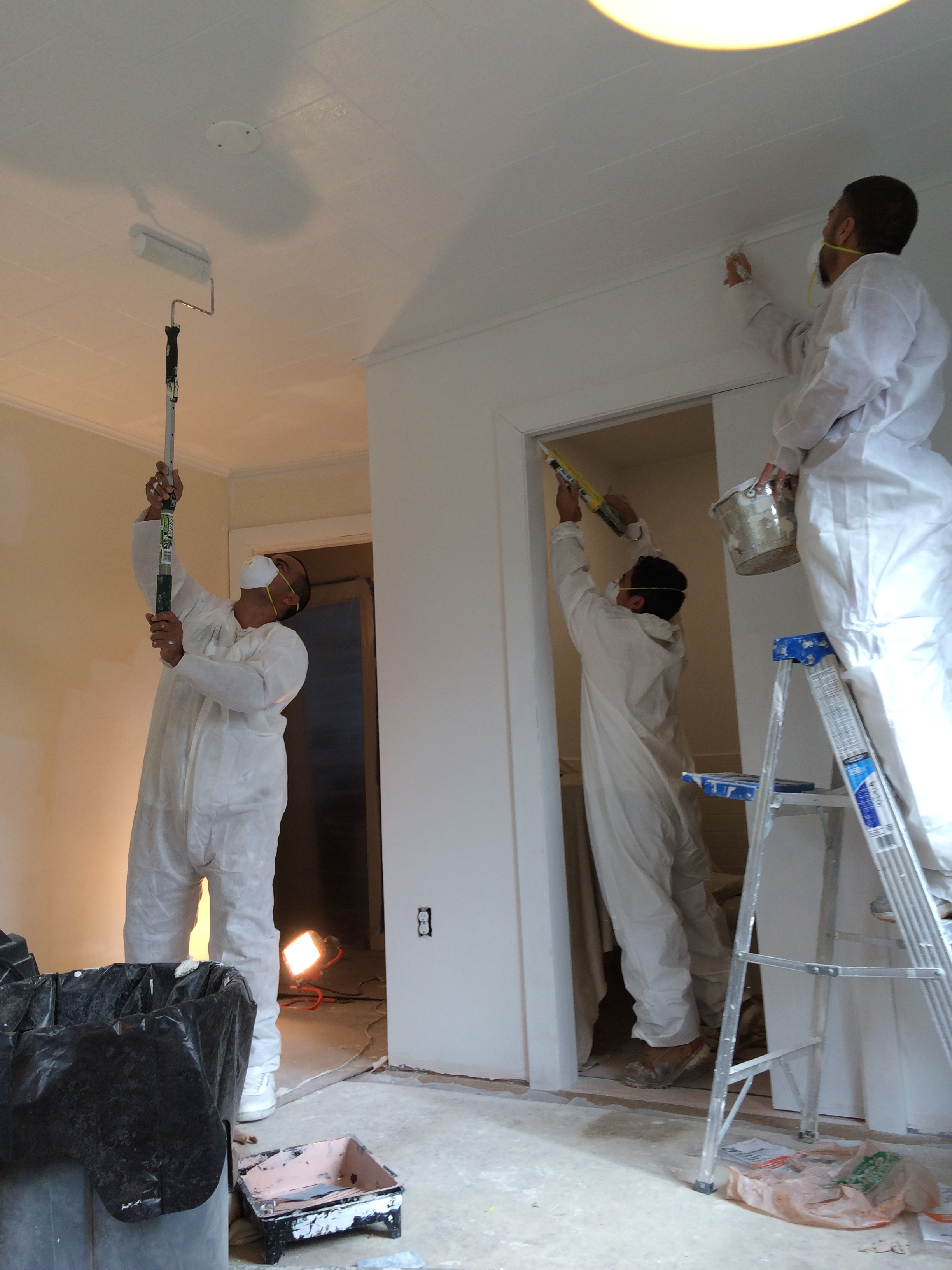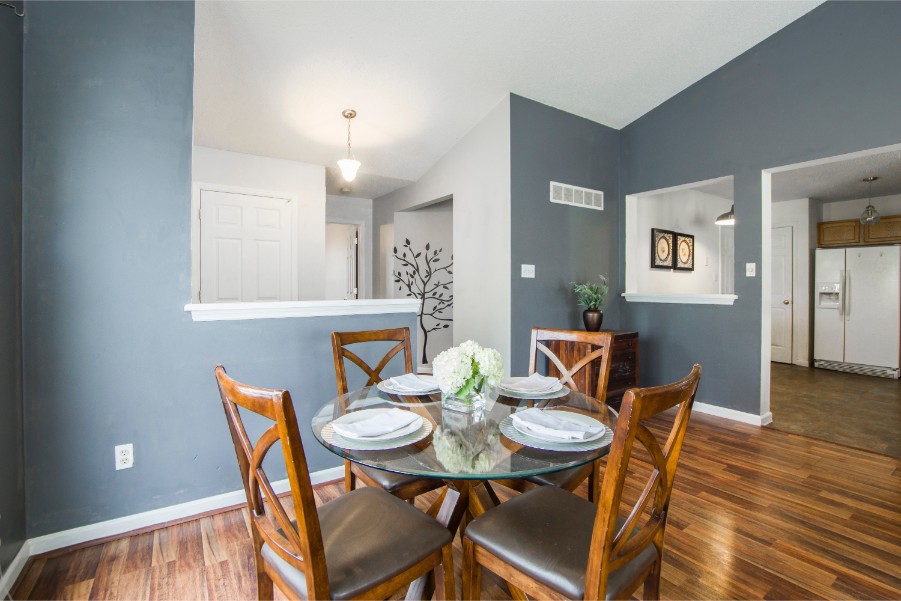Cleveland Metro Painting Specialists Offering Top-Notch Interior and Exterior Painting
Cleveland Metro Painting Specialists Offering Top-Notch Interior and Exterior Painting
Blog Article
Enhance Your Inside Design With Comprehensive Color Assessment
The assimilation of shade assessment into indoor layout provides a distinct opportunity to improve and raise the emotional and aesthetic resonance of a space. By involving with an experienced color consultant, you can browse the complexities of color choice, making sure that your choices not only complement architectural attributes however additionally resonate with personal design and mental influence.
Advantages of Shade Appointment

In addition, shade assessment help in optimizing natural light and maximizing spatial assumption. Lighter shades can make a room show up more large, while darker shades produce an intimate setting. Cleveland Metro Painting Specialists. This tactical application of color can considerably influence the overall setting of any type of interior area
Additionally, professional specialists have a detailed understanding of present trends and timeless standards, making certain that the picked colors will continue to be attractive with time. This insight can save customers from expensive redesigns in the future. Color assessment encourages customers by providing them with a clear vision and instructions, promoting self-confidence in their style selections and ultimately leading to a much more effective and satisfying interior style end result.
Comprehending Color Psychology
The importance of shade psychology in indoor design can not be overstated, as it dives into the psychological and emotional results that different tones can stimulate in people. Shades can influence state of mind, habits, and also productivity, making them a crucial factor to consider in any type of style task.
As an example, warm colors such as red, orange, and yellow are often connected with energy and heat. They can promote sensations of exhilaration and comfort, making them suitable for social areas like living rooms or kitchen areas. Conversely, great shades like blue, green, and purple have a tendency to evoke peace and serenity, making them ideal for rooms or reflection areas.
In addition, the usage of neutral tones can create a balanced setting by permitting the bolder colors to stick out without frustrating the detects. Recognizing these emotional impacts makes it possible for developers to develop rooms that not only look cosmetically pleasing yet also promote emotional health.
Including shade psychology into interior decoration includes a thoughtful choice of shades tailored to the intended feature of each area, ultimately boosting the total experience for its occupants. This recognition is essential for accomplishing a practical and harmonious interior environment.
The Shade Wheel Discussed
Understanding the partnerships in between hues is crucial for effective interior decoration, and the shade wheel works as a valuable device in this procedure. The shade wheel, created by Isaac Newton in the 17th century, shows the spectrum of colors set up in a round format. It comprises key colors-- red, blue, and yellow-- that can not be developed by blending various other colors. Secondary shades, formed by incorporating primaries, include environment-friendly, orange, and purple. Tertiary shades arise from mixing a main and a secondary shade, bring about tones such as blue and red-orange.
The color wheel helps designers realize the partnerships in between shades, official site including complementary, similar, and triadic systems. Corresponding shades, positioned opposite each various other on the wheel, develop vibrant contrasts that can energize a space.
Making use of the shade wheel in indoor design not just enhances aesthetic appeal however also stimulates certain emotions and environments, making it an essential recommendation for color consultation. Recognizing these connections eventually equips designers to create spaces that are both practical and visually fascinating.
Selecting the Right Scheme
An appropriate color system can link a space, boost its functions, and evoke desired feelings. Various spaces serve varied functions and call for schemes that reflect their intended use; for circumstances, relaxing shades such as soft blues or greens work well in bedrooms, promoting relaxation.
Following, take into consideration the natural light offered. Light can substantially change exactly how colors show up, so it is necessary to evaluate the room at different times of the day. In addition, think about existing architectural elements and home furnishings. An unified scheme needs to complement these functions, creating a cohesive appearance throughout the space.
When selecting colors, use the 60-30-10 regulation, which suggests that 60% of the space should be a dominant color, 30% a secondary color, and 10% an accent color. This proportion ensures equilibrium and visual rate of interest (Cleveland Metro Painting Specialists). Sample colors on the wall surfaces before devoting, as this enables you to see how the colors engage with one an additional and the overall ambiance they create in your interior style job.
Collaborating With a Color Professional

When working with a shade specialist, the process generally starts with a first consultation. Throughout this meeting, you'll review your vision, choices, and the existing components in your room. The expert will certainly examine your requirements and may recommend specific color palettes that straighten with your objectives.
After developing an instructions, the professional will certainly provide examples and aesthetic help to aid you envision the suggested color design. This action is essential, as colors can appear in a different way under differing illumination problems.
Furthermore, a shade professional can guide you in selecting complementary Get More Info furnishings, artwork, and accessories to balance with your picked palette. By teaming up very closely, you can achieve a refined aesthetic that raises your insides and creates an inviting atmosphere. Ultimately, the experience of a shade expert can significantly improve the total influence of your layout project.
Verdict
In recap, detailed shade appointment serves as an important device for boosting interior layout. By leveraging professional expertise of color psychology and spatial dynamics, a customized shade palette can be created to evoke details emotions and develop a harmonious environment.
By involving with a skilled color consultant, you can navigate the complexities of color choice, making certain that your choices not only complement building features however also resonate with personal design and emotional influence. It comprises primary colors-- red, additional resources blue, and yellow-- that can not be created by mixing other shades.The shade wheel aids developers realize the relationships between colors, including corresponding, similar, and triadic schemes.When choosing shades, utilize the 60-30-10 rule, which recommends that 60% of the room ought to be a leading shade, 30% a secondary shade, and 10% an accent color. By leveraging specialist understanding of color psychology and spatial characteristics, a tailored color scheme can be developed to evoke details emotions and produce a harmonious atmosphere.
Report this page